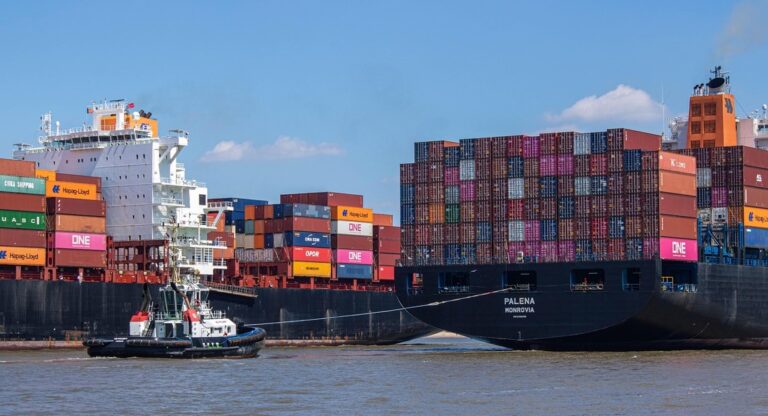Energy efficiency measures can reduce the total cost of the maritime energy transition by up to $220 billion per year, according to a new report released by the World Bank.
Illustration. Source: Pixabay
As explained, improving the energy efficiency of the global merchant fleet is insufficient to meet the IMO’s policy objectives alone. Therefore, green fuels, such as methanol and ammonia, will be indispensable in 2040 and 2050, but are more expensive than conventional fuels. A cost-efficient route to meeting the sector’s GHG emissions targets is to prioritize energy efficiency, which reduces the fuel consumption of the fleet and, therefore, the overall cost of the transition.
Annual capital investments in energy efficiency across the fleet of about $35 billion can save up to $270 billion in green fuel costs per year. Investments in energy efficiency measures also offer mitigation to fuel price volatility and will be a critical component of the fuel transition, when green fuels are still more expensive.
The report, titled “Keys to Energy-Efficient Shipping”, has assessed how energy efficiency measures can reduce greenhouse gas (GHG) emissions and operational costs in global shipping. Drawing on a fleet-wide analysis across key vessel segments (bulk carriers, container ships, and tankers), it quantifies the untapped potential of technical and operational efficiency measures through to 2050.
The report highlights the role of short-term operational measures (such as forms of port call and speed optimization) and medium-term technical innovations (for example, wind-assisted propulsion) in achieving substantial efficiency gains. It identifies persistent economic, behavioral, and organizational barriers to implementation and discusses them in two case studies, namely on port call optimization and wind-assisted propulsion, showcasing innovative approaches for overcoming these barriers.
Findings show that improved energy efficiency can cut global shipping’s GHG emissions by up to about 40% by 2030, exceeding current IMO interim targets, while simultaneously lowering fuel and transport costs.
Technical and operational energy efficiency measures offer a maximum potential to reduce absolute GHG emissions by 23-39 percent in 2030 relative to 2008 levels, clearly exceeding the IMO’s base level of ambition of 20 percent in 2030 and at a maximum exceeding the IMO’s high level ambition of 30 percent. The largest untapped potential in the short term lies in ship speed reductions for the overall fleet, reducing GHG emissions by 5-15 percent, with additional savings achievable by optimizing voyage speed into congested ports.
Beyond 2030, the contribution of technical measures, such as changes in ship design and the addition of new equipment, is expected to increase. As the global fleet’s fuel transition to green fuels is still ramping up, energy efficiency improvements are promising short-term solutions. While energy efficiency measures are insufficient to meet the IMO’s 2050 target, at a maximum lowering of GHG emissions to about 40 percent below 2008 levels, they will also complement the fuel transition beyond 2030 and reduce ships’ reliance on fossil fuel.
What is more, about half of the emissions savings from energy efficiency measures are considered cost-effective in 2030, cutting 250 million tons of emissions at no cost. By 2030, cost-effective energy efficiency measures could fully pay for themselves by lowering shipping’s fuel costs
For bulk carriers, container ships, and tankers, which account for nearly 80 percent of shipping GHG emissions, the majority of energy efficiency measures are cost-effective. However, marginal abatement costs for individual measures vary by ship type, primarily due to differences in ship design and operational requirements.
Tankers have the least cost-effective abatement due to relatively higher installation costs of technologies and technical limitations when reducing speed. Bulk carriers offer favorable design features for wind-assisted propulsion, while container ships show high abatement effectiveness in reducing speed.
Images are for reference only.Images and contents gathered automatic from google or 3rd party sources.All rights on the images and contents are with their legal original owners.
